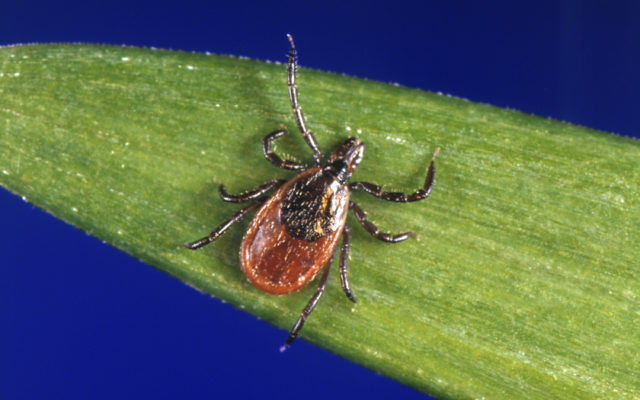
Summer drought likely reduced tick activity in Maine, but they’re back
By Aislinn Sarnacki, Bangor Daily News Staff
If there’s one thing that deer ticks don’t like, it’s dry weather, and this year, Maine has had plenty of it.
A lack of rain throughout the summer resulted in a moderate to severe drought throughout the entire state of Maine for the first time in 18 years. Tick experts believe that the hot, dry conditions may have contributed to less tick activity and tick-human interactions during the summer, but they expect an uptick in tick activity this fall.
“This is the time of year when people kind of let down their guard from protecting themselves from mosquitoes and blackflies — but ticks remain active steadily into the fall,” said Griffin Dill, a tick expert who manages the Tick Lab located in the University of Maine Cooperative Extension Diagnostic and Research Laboratory in Orono. “It’s a really important time of year to take protective measures and really focus on conducting tick checks when you’ve been outside.”
Peak fall tick season — when ticks are actively looking for hosts to feed on — generally spans from mid-October to mid-November, Dill said.
“Basically, until we’re seeing sustained daytime temperatures below the freezing mark, they’ll be active,” Dill said. “These cold nights are not adequate enough for them to become dormant. They’ll just hang out in the leaf litter and wait for the temperature to heat up during the day.”
Generally, people in Maine run into more deer ticks (also called blacklegged ticks) in the spring and fall than they do during the summer, when the hot and dry weather forces deer ticks to seek shelter much of the time.
“Ticks can lose water very easily and are highly vulnerable to desiccation under low humidity or high temperature conditions,” said Allison Gardner, assistant professor School of Biology and Ecology at the University of Maine who specializes in tick-borne pathogens. “Even if dryness doesn’t directly cause tick mortality, ticks may behaviorally avoid adverse conditions by spending more time in the soil, where they are able to survive but less likely to encounter hosts to parasitize.”
The idea that deer ticks sought shelter more than usual over the summer this year is supported by data collected by the UMaine Tick Lab.
For several years, the lab has offered the free service of identifying the species of Maine ticks sent in by the public. In 2019, the lab launched a new program, testing deer ticks for common tick-borne pathogens at a cost of $15 per tick. These programs help the lab collect data about tick activity and the prevalence tick-borne pathogens throughout the state.
“We had really high tick activity in early spring and early summer, and that was exacerbated by COVID restrictions and having people at home and not having much else to do but recreate outdoors,” Dill said. “With tick activity high and human activity high, we had a high number of submissions early on.”
However, as the weather warmed and became drier, the number of ticks being sent to the lab dropped more than in previous years.
“The submission of immature deer ticks was down from last year about 50 percent,” Dill said. “Immature ticks emerge at the end of June and are active through July. Those are the times we were really seeing those dry conditions so it really minimized their ability to get out there and quest to find hosts.”
Other factors may have also contributed to the lower number of ticks being sent to the lab this summer.
“Last year, we saw unusually low mouse population sizes which also may have contributed to the low tick densities this year,” Gardner said. “Blacklegged ticks have a 2-year life cycle, and if larval ticks, which hatch in August, are unable to find small mammal hosts to parasitize before the winter, this often leads to smaller tick population sizes the following summer.”
Dill said that tick submissions to the lab are trending downward a little for the fall, yet he stressed the importance of people protecting themselves from ticks during the season. There are still plenty of these disease-carrying pests on the landscape.
“One year of drought conditions is probably not going to be enough to significantly reduce the tick population, and we do see that fall peak,” Dill said. “It’s the adult stage now that’s active. The weather conditions have been right for them to be active. It’s been cooler. It’s been wetter.”